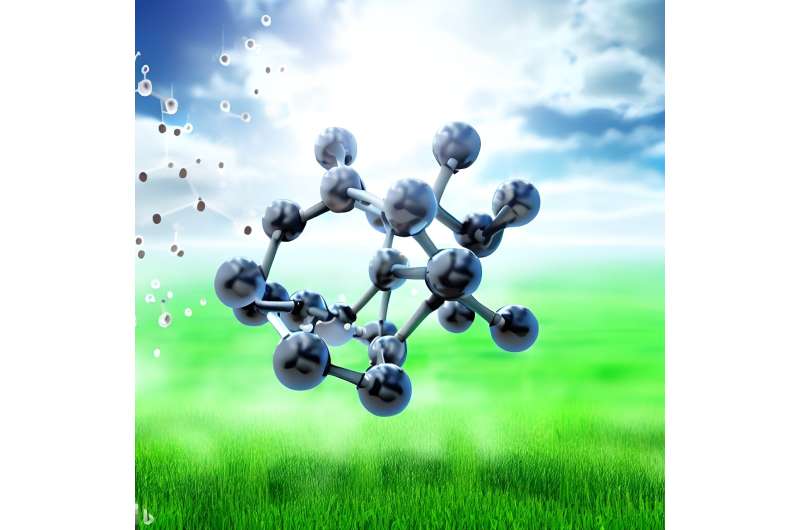This article has been reviewed according to Science X's editorial process and policies. Editors have highlighted the following attributes while ensuring the content's credibility:
fact-checked
trusted source
proofread
New calcium material functions as an ammonia synthesis catalyst

Researchers find calcium outshines chromium in the catalytic production of ammonia. Working together, a humble trio of calcium atoms have defied expectations to break apart one of the strongest chemical bonds known. The atoms form the key part of a catalyst that can cleave the triply bonded nitrogen molecule (N2), an essential step in synthetic ammonia-based fertilizer manufacture. The discovery could inspire new and greener ways to make fertilizer and other essential chemicals.
Calcium's capability to catalyze the production of ammonia from nitrogen was very unexpected, says Yoji Kobayashi, an inorganic materials chemist from KAUST, who co-led the work. Industrial ammonia production currently is carried out using an iron catalyst, but the process requires high reaction temperatures and pressures, which has prompted the search for alternatives.
"Classical ammonia synthesis catalysts are known to work well when based on ruthenium, iron or cobalt, while they work extremely poorly with other early transition metal compounds, such as chromium," Kobayashi says. But in the past few years, Kobayashi and a few other groups have discovered several more effective hydride catalysts based on titanium, vanadium and chromium, reinvigorating the search for new ammonia catalysts.
Kobayashi and his team recently discovered a new chromium nitride hydride material—which happened also to contain calcium—and showed it could function as an ammonia synthesis catalyst. So, they decided to look more deeply into the catalyst's mechanism, using a combination of experimental and computational methods.
"For the computational chemistry, we collaborated with Luigi Cavallo's group in the KAUST Catalysis Center," Kobayashi says. The catalyst—with the formula Ca3CrN3H—has quite a complicated structure, he adds. "There are many possible reaction sites, and each one had to be checked to see if nitrogen conversion to ammonia is feasible."
The results of the analysis were very surprising, Kobayashi says. "What was really unexpected was the role of calcium," he says. "The N2 binds to a trio of calcium atoms on the catalyst surface, and then is hydrogenated to become ammonia," he says. The chromium atom, expected to be the center of the action, plays no direct role in activating the N2 molecule for conversion to ammonia.
Although the activity of the catalyst for ammonia synthesis is relatively low, it opens a new research direction for catalyst material exploration, away from the transition metal elements long thought to be essential for this reaction. "There are many other inorganic structures with similar atomic arrangements that we could examine," Kobayashi says. "Our study shows that with a little creativity, the scope of good catalyst materials can always be expanded," he adds.
More information: Yu Cao et al, Ammonia Synthesis via an Associative Mechanism on Alkaline Earth Metal Sites of Ca3CrN3H, ChemSusChem (2023). DOI: 10.1002/cssc.202300234





















